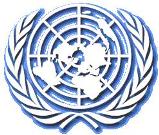People generally agree that many projects are not as good as they could be. One reason for this which has not been mentioned in previous blog entries lies in the indirect or direct contribution that some “development” activities make to the economies of the donor countries. Here I am speaking in particular of two main types of contributions:
- tied aid,
- contributions in kind aimed at supporting specific sectors.
| Concerning tied aid, while it is understandable that countries need to justify large expenditures of taxpayer money on causes outside the country, the tying of aid to particular products, actors or other factors generally reduces the quality of the project and can significantly increase the costs. A UN Report (find the full report at http://www.un.org/Depts/rcnyo/newsletter/survs/ecasurv2004.doc) estimates the extent to which development monies from certain key donors are still tied today. |  |
According to this report, up to 80% of all development flows return to the home country of the donor (page 6). This is a shocking level, given the generally accepted justification for further aid that it mostly benefits the recipients, and gives fuel to the critics of development cooperation, who want to stop all activities.
With respect to donations (contributions in kind), one example is food aid: US contributions of grain to the World Food Programme (WFP) have also helped maintain grain prices in the US itself at certain key times. Contributions of tractors or buses or other goods generally also benefit the company/ies in the donor country who supply these goods. And these objections do not take into account the current food shortages on the world market.
The practice of donating goods in kind is not inherently bad: many instances can be cited in which such contributions alleviated an acute shortage of the particular item in the recipient country. On the other hand, it does not make for good development projects. Generally, such practices increase dependence of the recipient country on the particular brand (of an industrial good) or type of donation (for example, grain) and are thus a type of tied aid.
They fill a short-term need but cause distortion and disruption over the long term. In the examples mentioned above, they distort the market for other brands that may be more appropriate or less expensive for the local situation; in addition, the country must build up maintenance and mechanical capabilities in the particular brand. Concerning food donations, specialised organisations such as WFP have long pleaded for financial contributions, so they can buy grain and other such goods on local or regional markets and not create serious market distortions by flooding the markets with cheap/free imported grains. Studies have shown that a number of African countries produce less of their own food than was the case a few decades ago and attributed this to food aid.
The real issue here is that – aside from the recipients of “reverse aid flows” (in our examples here, the companies and individuals who benefit from tied aid or donations in kind) – there is no natural constituency for development support in the donor countries. So if we are to reduce the need for tying aid or linking it to certain domestically produced products we need to find a way to build taxpayer interest in development. I believe this can be done through a combination of better public relations and tying the real benefits from development cooperation to an improvement in the lives of the donor country populations. I will come back to this issue in future blogs.






